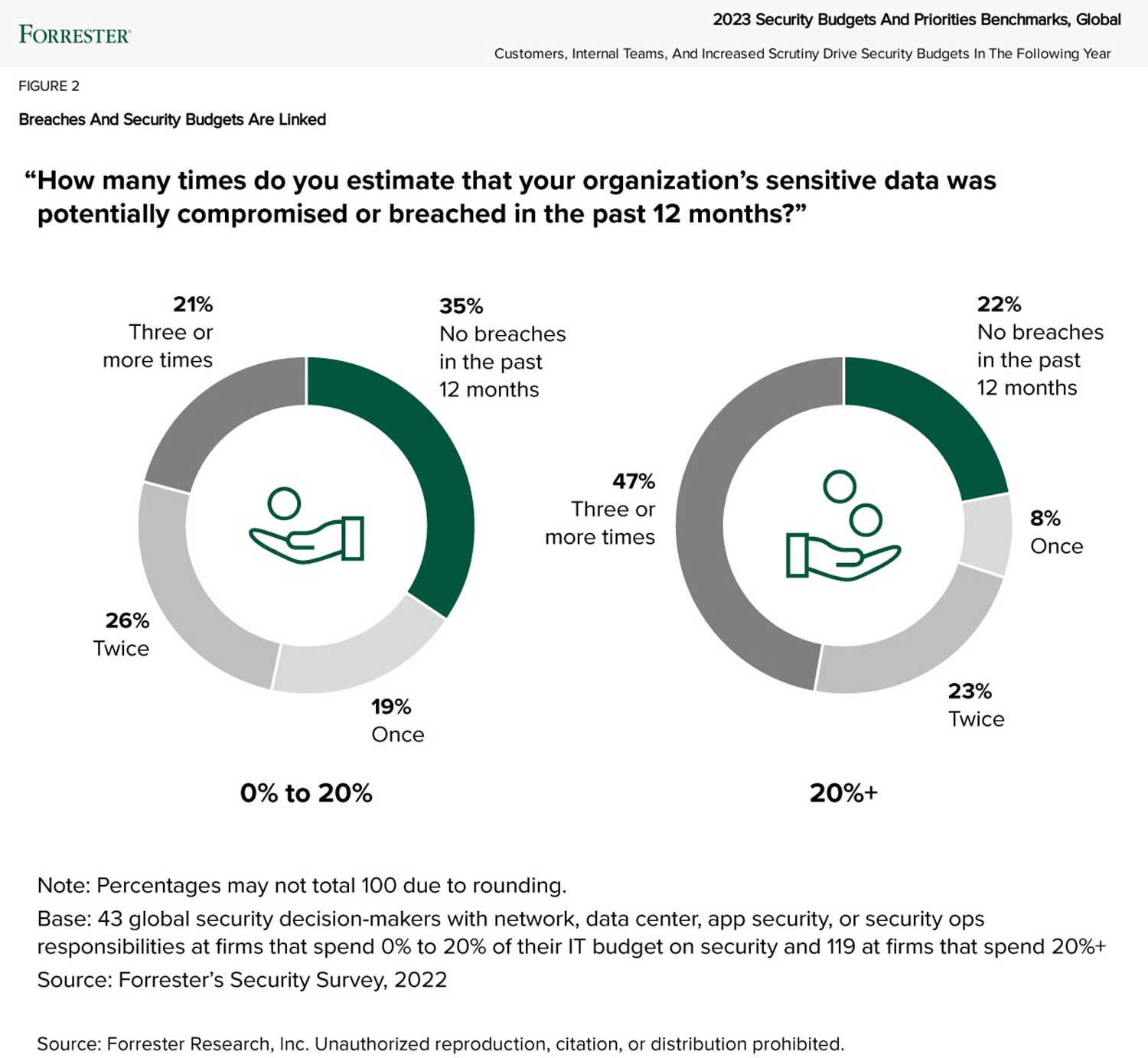 Security and risk leaders continuing to battle existing threats also need to change the way they defend against emerging threats from the rise of generative AI tools, geopolitical uncertainty and increased cloud complexity.
Security and risk leaders continuing to battle existing threats also need to change the way they defend against emerging threats from the rise of generative AI tools, geopolitical uncertainty and increased cloud complexity.
Forrester’s recently published report, Top Cybersecurity Threats in 2023, explores the top five established and emerging cybersecurity threats organisations will face in 2023 and offers recommendations for defence against each of them.
“Cybersecurity threats continue to plague organisations, multiplying like Mogwai in the 1984 hit movie Gremlins (just don’t feed them after midnight). Forrester data shows that almost three-quarters of organisations reported one or more data breaches in the past 12 months,” writes Brian Wrozek, Forrester principal analyst and lead author of the report.
Security professionals, including chief information security officers (CISOs), have their jobs cut out for them, with 74% saying their organisation’s sensitive data was potentially compromised or breached in the last year, according to Forrester. The percentage of external attacks remained constant, with a slight (2%) increase in internal incidents.
Established and emerging threats vie for CISOs’ attention
Forrester’s report highlights the tug-of-war faced by security professionals, saying security teams have to remain vigilant against known threats while still making sure to address new ones stemming from emerging technologies. The firm believes there will be a combination of old and new threats in 2023.
The top two established threats are:
- The continued growth of ransomware: The report points out that ransomware remains a key concern although the company says it has evolved. Today, bad actors are doubly extorting their victims, demanding money to prevent the leaking of the stolen data as well as a ransom to decrypt files.
- The human elements of BEC remaining unaddressed: Business e-mail compromise is the combination of social engineering with email and phishing tactics. Forrester warns that although e-mail security technology continues to advance, technology alone is insufficient. The human element in security has either been dismissed or “limited to compliance-driven, outdated and confusing security awareness and training programmes.”
When it comes to emerging threats, Forrester says what used to be considered tomorrow’s threats are quickly becoming today’s headaches for security leaders. It has pegged the top three emerging security threats in 2023 as:
- AI deployments: The power of applications such as ChatGPT is raising concern that bad actors could poison data to alter the outcomes of algorithms. Forrester says this will undermine AI’s reliability and performance. And since so much of our current cybersecurity relies on machine learning and AI for detection, this poses a real and immediate issue.
- Cloud computing: The growing reach and complexity of cloud environments, including infrastructure as a service (IaaS), platform as a service (PaaS), and software as a service (SaaS) computing means misconfigurations and ineffective security controls will lead to more data compromises.
- Geopolitical uncertainty: Forrester points out that Russia’s war on Ukraine shows no signs of abating. The firm adds that this hybrid war, involving both the cyber and physical realms, sets the tone for future escalations. As such, public and private organisations should prepare for increased threats.
Security isn’t a cost centre, it’s a revenue necessity
Looking at practical ways to help CISOs address these and other emerging threats, Forrester has suggested the closer examination of three externalities for security leaders to protect their budgets from macroeconomic headwinds. In a new report, CISOs Tactics to Win Every Budget Battle, Forrester’s methodology demonstrates how cybersecurity spending directly impacts revenue.
“CISOs already know that cybersecurity is a core competency of their businesses. Other executive leaders may not. This is often in part because security leaders failed to highlight how many externalities force security spending. Those externalities include customers, cyber insurers and regulators,” writes Jeff Pollard, Forrester VP, principal analyst and co-author of the report.
Forrester experts say that when the externalities have been identified, CISOs can begin collecting the information that will help them to overcome budgetary pressures. They will then be better able to prove that cybersecurity is the cost of doing business.

Forrester’s Pollard adds: “Cost of sale (CoS) and cost of goods sold (CoGS) do not factor in cybersecurity costs, and CISOs need to change that.”
The Forrester methodology is aimed at helping deliver hard evidence of how cybersecurity spending directly impacts revenue. More particularly, it can assist security leaders in defending their security budgets to the board, C-suite, and other stakeholders while also ensuring they are adequately equipped to face the rapid growth of new and emerging cybersecurity threats.
Security leaders looking to better understand the new emerging security threats as well as the methodology to help them secure the budget needed to fight them should contact Joan Osterloh, Forrester’s authorised research partner for South and East Africa.
- Read more articles by Forrester on TechCentral
- This promoted content was paid for by the party concerned




